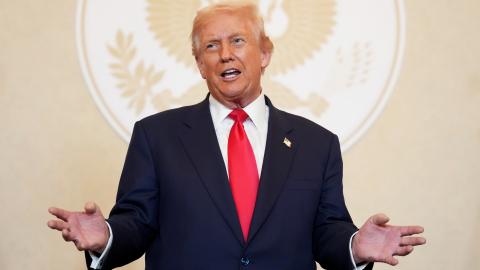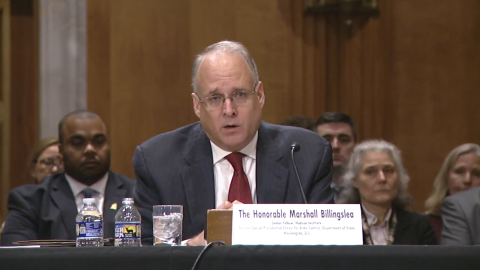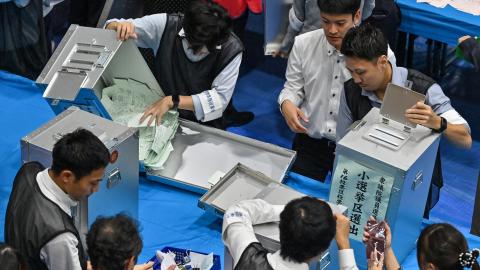Executive Summary
The ruling Liberal Democratic Party (LDP) of Japan is undergoing a leadership transition, with five candidates currently in the running. The outcome of this election is critical, as the LDP leader is almost certain to become the next prime minister of Japan.
Leading Contenders
Shinjiro Koizumi
Background: Minister of agriculture and son of former Prime Minister Junichiro Koizumi. At only 44, he would be Japan’s youngest-ever prime minister.
Key Stances:
- Economy: Advocates for some tax reform, including removing the provisional gas tax, but opposes reducing the consumption tax or making direct cash payments to citizens.
- Foreign policy: Seeks to improve relations with the United States, but champions a multilateral approach, emphasizing ties with South Korea, India, and Australia.
- Defense: Supports an increase in the defense budget to 2 percent of gross domestic product, but is reluctant to go higher.
- Other issues: The only candidate who supports same-sex marriage.
Sanae Takaichi
Background: Former minister for economic security and a contender to become Japan’s first female prime minister. Her campaign has focused on the challenges posed by increased immigration and the surge in tourism.
Key Stances:
- Economy: Favors expansionary fiscal policies and supports tax credits for low-income households.
- Defense: Regarded as the most hawkish candidate. Supports a constitutional amendment to formally recognize the Japan Self-Defense Forces. Has muted her expansionary economic policies in recent months.
- Foreign policy: Believes Japan is overly reliant on US security guarantees and has discussed forming a “quasi-security alliance” with Taiwan. Suggests creating a process to review foreign investments akin to the Committee on Foreign Investment in the United States (CFIUS).
Yoshimasa Hayashi
Background: Chief cabinet secretary of Prime Minister Shigeru Ishiba and supporter of the PM’s policies.
Key Stances:
- Economy: Focuses on removing tax burdens on small and medium enterprises (SMEs) and would consider direct cash payments to citizens.
- Foreign policy: Considered the most dovish of the five candidates. Has previously advocated for close Japan-China relations.
- Other issues: Supports policies to address climate change.
Toshimitsu Motegi
Background: Former secretary general of the LDP.
Key Stances:
- Economy: Touts his experience as a tough trade negotiator and his potential work with the Trump administration to achieve more favorable trade terms.
- Foreign policy: Has suggested leveraging Washington’s concerns about China to improve the Japan-US relationship.
- Defense: Supports raising military spending, but on a gradual basis.
Takayuki Kobayashi
Background: Former minister for economic security.
Key Stances:
- Economy: Recommends reforming the income tax system. Also advocates for investment in technology and artificial intelligence.
- Defense: Supports raising military spending beyond 2 percent of GDP and amending the Japanese Constitution to recognize the Japan Self-Defense Forces.
- Foreign policy: A strong supporter of Taiwan. Believes in a tight link between national security and economic security issues such as supply chain resilience.
Voting Structure
The election proceeds in two rounds, with different electorates playing key roles in each.
Round One (590 total votes)
- 295 votes from elected LDP lawmakers.
- 295 votes allocated proportionally based on ballots from approximately 900,000 rank-and-file LDP members.
- A majority (296+ votes) is required to win outright.
If neither candidate receives 296 or more votes, there is a runoff, wherein the rank-and-file voting bloc’s input is significantly diminished.
Round Two (342 total votes)
- Run-off between the top two candidates.
- 295 votes from elected LDP lawmakers (same as round one).
- 47 votes from prefectural LDP chapters (one per chapter, reflecting the popular vote; significantly less representation than round one).
- A majority (172+ votes) is required to win.
Implications for Domestic and Foreign Policy
- The leadership contest is highly fluid, and results are difficult to predict.
- Legislator support will likely decide the outcome, reinforcing the importance of intra-party dynamics at the expense of public sentiment.
- The outcome may shape Japan’s policy direction, particularly for US-Japan relations, economic security, agricultural reform, and party modernization.
Election Background
To understand the LDP’s precarious position, it is helpful to note that Prime Minister Ishiba was elected without a majority in Japan’s lower house (the House of Representatives). Shortly after Ishiba won LDP leadership in September 2024, a near-majority of Japanese voters expressed support for an LDP-led government, with only 27 percent supporting a government led by the Constitutional Democratic Party of Japan (CDP), the LDP’s main opposition. Ishiba dissolved the House of Representatives and called a snap general election for October 27, aiming to capitalize on his electoral momentum. But the results of the snap election were disastrous.
The LDP’s Electoral Struggles
In what is best understood as an anti-LDP vote, the party’s coalition with the Komeito lost 56 seats in the October 27, 2024, election and was left with only 215 of the 233 needed for a majority. Still, thanks in large part to public distrust of LDP alternatives and the opposition’s inability to unify behind a single candidate, Ishiba was elected prime minister in a special Diet session on November 11.
Ishiba’s minority government has thus been forced to govern by forming ad hoc alliances and capitalizing on disunity between the CDP and other minority parties. But if the LDP fails to address underlying issues, the next LDP leader may face similar vulnerabilities in maintaining power.
The political funds scandal that precipitated the resignation of Ishiba’s predecessor, Fumio Kishida, also continues to undermine the LDP’s electoral chances. The scandal involves dozens of LDP lawmakers who allegedly channeled unreported proceeds from fundraising events into secret accounts, evading transparency mandates. The Ishiba administration’s attempts at reform have thus far failed to restore public trust. The scandal’s ongoing effects will likely harm the electoral prospects of Takaichi and Motegi, who are associated with the implicated factions of the LDP.
Moreover, the funding scandal has intersected with broader governance critiques. Younger and more urban demographics increasingly believe the LDP is out of touch and only looks to its traditional rural and elderly base.
Internal and External Coalitions
The incoming leader will need to collaborate with the left-leaning Komeito, which bristles at major rightward shifts. Yet any candidate that attempts to move to the center risks losing conservative voters to parties like Sanseito.
Internal schisms further imperil the LDP in two main ways. First, the disbandment of prominent factions linked to the late Prime Minister Shinzo Abe and Kishida has exacerbated discord, with junior parliamentarians clamoring for an overhaul of election rules. A contentious runoff election could exacerbate fissures and would risk replicating the 1993 schism that temporarily displaced the LDP.
Second, the disbandment of the faction system creates uncertainty for the LDP’s internal power balance and support for policies. The faction system helped leaders gauge party support for policies and candidates. The large number of candidates in recent LDP presidential elections demonstrates this lack of clarity.
Economic challenges and geopolitical strains intensify the LDP’s vulnerabilities. Japan faces persistent inflation, sluggish GDP growth, a rapidly declining birth rate and aging population, and financial market volatility. American tariffs, North Korean aggression, and frictions with China and Russia compound these struggles. Candidates propose remedies such as tax reductions to spur wages and cash payments to offset cost-of-living increases. But the LDP will need external support to pass these measures, which may require the party to agree to further scandal investigations. Concurrently, the CDP has gained traction, increasing seats in recent contests and championing a progressive agenda that have seen opposition party support. Though a non-LDP government is still unlikely, opposition parties’ amplified voices will complicate the LDP’s governance.
Implications for Japan and the US
The LDP election’s outcome carries significant strategic implications for the United States. Tokyo is Washington’s most critical ally, particularly in the context of the rising challenge from China. The US-Japan alliance depends not only on shared values but also on mutual economic resilience and military capability. Ensuring continued bilateral alignment on regional security, economic policy, and technological standards will require strong leadership in Tokyo.
US-Japan Security Cooperation
The LDP’s electoral struggles threaten to damage the US-Japan alliance, which is essential to maintaining regional security and countering China’s multidimensional aggression. Economic instability could compel Japan to prioritize domestic consolidation over foreign commitments, delaying joint defense initiatives or responses to threats from North Korea and Russia, complicating US strategy toward Asia.
Though all relevant Japanese political parties support the US-Japan relationship, they differ on the degree and details of their support. For instance, Tokyo is on track to increase its defense spending to 2 percent of GDP by 2027. But signs indicate that Washington will push Tokyo to increase its spending to 3 percent or more. A weak LDP prime minister, or a leader from a smaller party, may not have the political capital to make such an investment in the face of domestic economic pressures. Other issues central to the security alliance, such as basing costs, weapons procurement, and joint production, may face challenges as well.
Regardless of the ruling party, weakness in the Japanese government threatens US interests. Prolonged LDP turmoil or a fragile opposition-led administration could result in policy paralysis, diminishing Japan’s role as a reliable counterweight to Chinese influence in the region.
This weakness might embolden adversaries and force the US to shoulder more of the security burden. The US would then face escalating costs and increased risks in areas like the South China Sea or Taiwan Strait where Japan’s strategic partnership is crucial for deterrence.
Conversely, renewed competition in Japanese politics could invigorate the US-Japan alliance by introducing fresh dynamism, though short-term uncertainty might undermine coordinated efforts against authoritarianism in the region. Overall, US policymakers should seek to navigate this instability to sustain the partnership’s efficacy.
Trade Talks
The recent US-Japan trade agreement and associated tariffs could significantly affect the LDP’s ability to maintain power. On July 22, the US and Japan announced a framework agreement that reduced baseline tariffs on nearly all Japanese imports to the US from a threatened 25 percent to a more palatable 15 percent. In exchange, Japan committed to invest $550 billion in American projects (with Washington wielding significant power over those projects) and purchase more American goods, including agricultural products, automobiles, aircraft, and defense equipment.
The deal is a double-edged sword for the LDP. Averting higher tariffs is a diplomatic victory for Ishiba, who pushed to increase Japanese investment in the US to stave off the White House’s punitive measures. This might bolster the party’s image among business leaders and exporters, stabilizing economic sentiment in favor of the LDP. But opposition parties have criticized the agreement, arguing that it exacerbates economic woes such as inflation and the yen’s weakness. A fragile LDP prime minister might struggle to implement the terms of the trade agreement in the face of criticism from opposition parties and the electorate, a delay that could upset the Trump administration and lead to higher tariffs. This would have economic consequences for Japanese voters, further amplifying calls for change and continued political turmoil.
In Washington and Tokyo, many Japan watchers cite the success of US-Japan relations under the Abe and Trump administrations as evidence that the next Japanese prime minister needs to develop a similar relationship. While this is desirable, it should not be the foremost criterion for electing the next LDP leader or Japanese prime minister. There are simply too many challenges: (1) the LDP is fractured, (2) the Japanese government needs decisive domestic leadership, and (3) the Japanese economy needs a pathway to stable long-term growth despite its demographic challenges. The next Japanese prime minister should prioritize the development of an effective domestic political and economic program to strengthen Japan. A clear and decisive Japanese government, as existed under Abe, is a better predictor of an effective relationship between Washington and Tokyo than assessing interpersonal dynamics.
Conclusion
The upcoming LDP leadership election is a critical inflection point that will test the resilience of Japan’s long-dominant party and, by extension, the stability of the US-Japan alliance. The outcome is difficult to predict, as the outsized influence of LDP lawmakers means that internal party dynamics are more likely to be the decisive factor than public polling or the sentiment of rank-and-file party members. A new leader will immediately inherit a difficult governing scenario: a minority government, a party fractured by scandal, and a nation grappling with economic stagnation and demographic decline.
The resulting political instability could have direct consequences for Washington’s interests in the Indo-Pacific. While all the candidates acknowledge the importance of the US-Japan relationship, a weak or politically preoccupied prime minister may lack the political capital to advance shared strategic goals. This weakness could (1) delay vital joint defense initiatives, such as pushing defense spending beyond the 2 percent goal, (2) complicate the delicate implementation of the recent US-Japan trade agreement, and (3) diminish Tokyo’s capacity as a reliable and forceful counterweight to China’s growing influence. Ultimately, the stability and decisiveness of Japan’s domestic leadership are the most vital guarantors of a strong alliance, and US policymakers should prepare to navigate a period of potential instability as Japan searches for a path toward renewed political and economic strength.




















